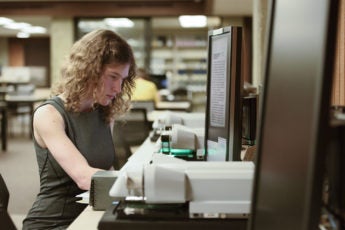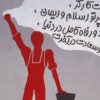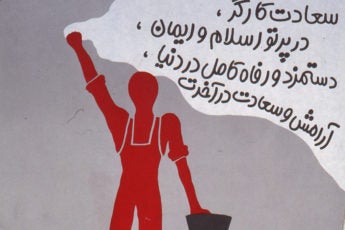Commitment, generosity guide Iranian Studies program to great heights
Students now have the opportunity to dive into the history of Islam and other religions in Iran, dissect the modern politics of the country, learn Persian through a series of language courses or discover the country’s contemporary cultural movements and its world-renowned film scene.
When the Iranian Studies program began in the 2005-06 academic year, only two classes were offered. Since then, under the direction of Abbas Milani, the program has expanded significantly.
Today, as the program celebrates its 10th anniversary at Stanford, it continues to bring a thoughtful and immersive perspective to the study of Iran and its place in the world.
Go to the web site to view the video.
Q&A with Iranian Studies director Abbas Milani
Students now have the opportunity to dive into the history of Islam and other religions in Iran, dissect the modern politics of the country, learn Persian through a series of language courses or discover the country’s contemporary cultural movements and its world-renowned film scene.
These subjects are among many that are taught in about 20 Iran-specific classes offered as part of the program each academic year.
“From a geopolitical perspective, Iran is one of the most important countries in the world, yet there had been very little research and policy work on Iran carried out at leading universities in America,” said Hamid Moghadam, a business executive who served on Stanford’s Board of Trustees for 10 years. “We saw an opportunity to start a program at Stanford under the directorship of Abbas Milani to educate our country’s future leaders on Iran, its politics, strategic importance and relationship with America and the rest of the world.”
Milani, who has been at Stanford since 2003, shared some of his thoughts on the significance of teaching the history, culture and complexities of Iran.
Why is it important to study Iran?
Familiarity with Iran and its rich ancient civilization, no less than with its critical – albeit controversial – role in the current world is an indispensable part of becoming an informed global citizen of our time. From the rise of the Cold War and the growing tide of radical Islam, to issues relating to nuclear proliferation, and the role of immigrants in enriching life in America, Iran is invariably a critical factor.
How did Stanford’s Iranian Studies program start, and what was your original vision?
Our program began with the generosity and vision of Hamid and Christina Moghadam. Their interest in establishing an Iranian Studies program fortuitously fit the desire of Stanford’s academic leadership to strengthen the curriculum in hitherto ignored areas like Iran. Our mandate of developing an interdisciplinary approach to modern Iran also fit the university’s commitment to increasing interdisciplinary approaches across the curriculum.
Over its first decade of existence, the Iranian Studies program has expanded tremendously. What has been the program’s biggest achievement?
Our biggest achievement has been our ability to bring together an increasing community of students, professors, scholars, artists, community leaders and generous donors – many of them with no past affiliation with Stanford – to create an Iranian Studies program befitting Stanford’s sterling reputation.
Describe what Iran is today. What are some of the biggest misconceptions about this country in the U.S. and across the world?
Iran today is a land of many paradoxes. It is ruled by conservative elder men committed to an antiquarian vision of politics and society. Their regional adventurism has been destabilizing. Yet beneath this ogre reality is a vibrant and youthful Iranian society with global ties and aspirations and a strong desire to join the new century as a law-abiding nation, able to realize the full potential of an Iran rich in history and in human and natural capital. Our goal as a program is to help our students, our Stanford community and, through them, the rest of the world to better grasp the complexities of this reality.







